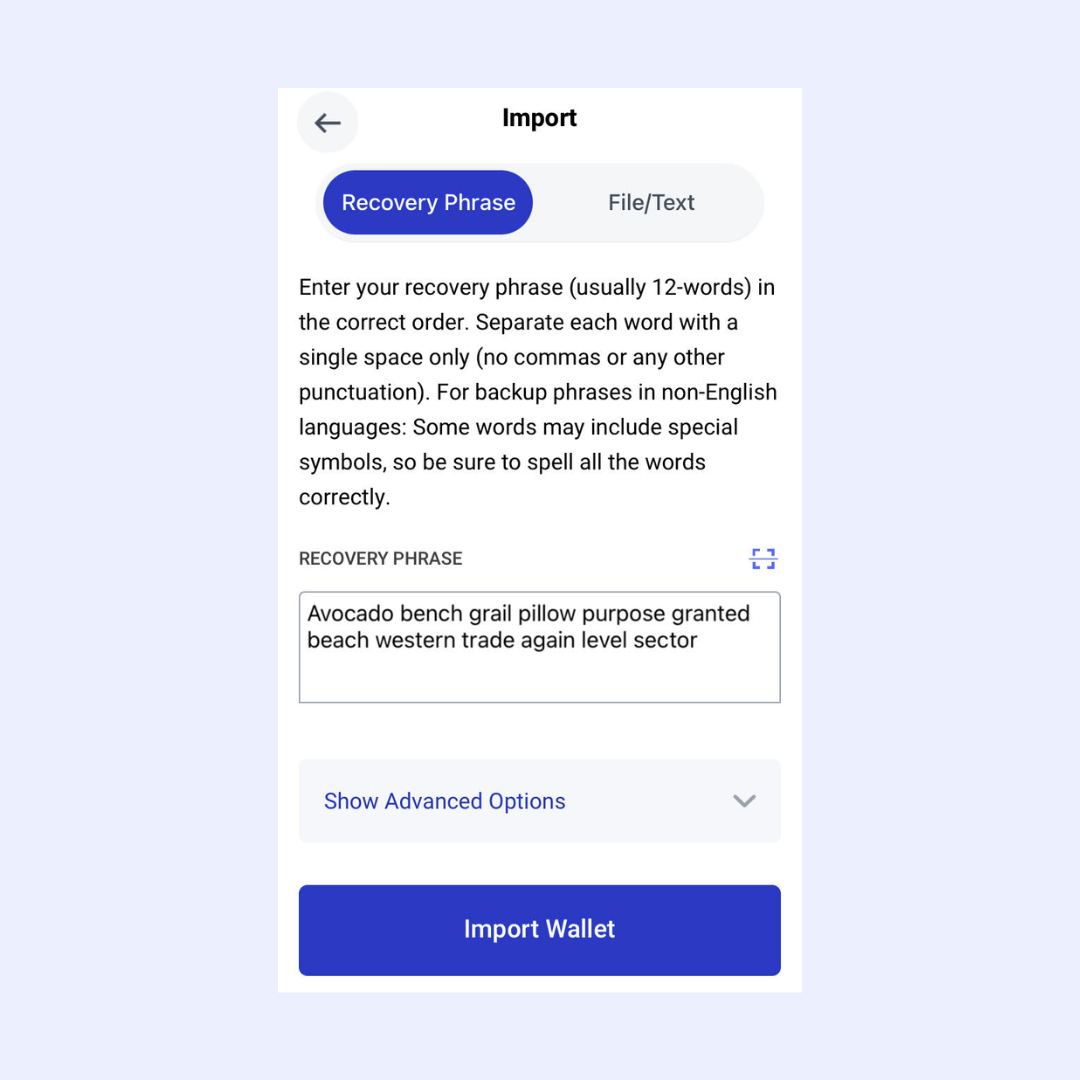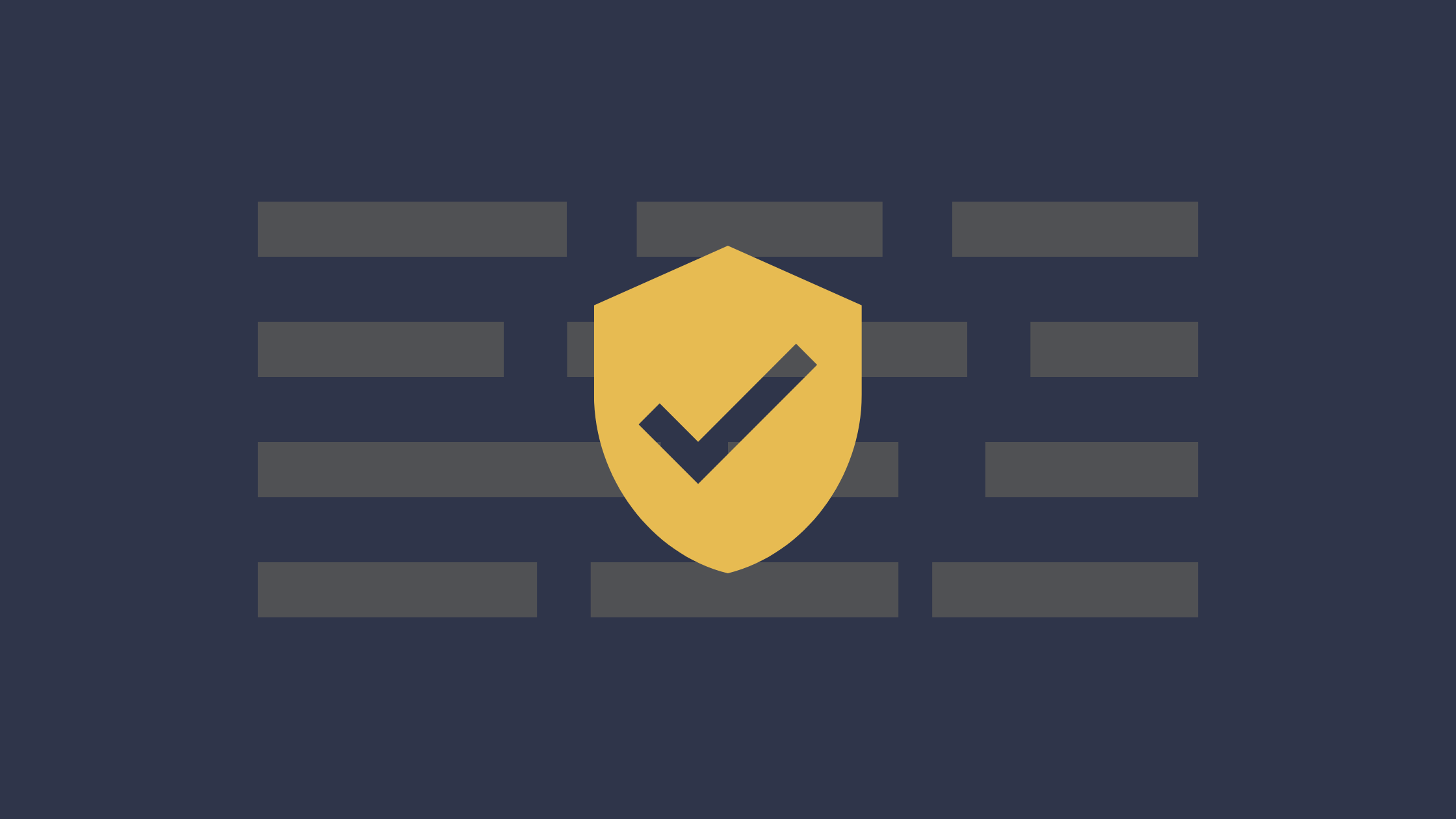A seed phrase, also known as a recovery phrase, might just be the single most important layer of security for crypto users. Seed phrases can serve as the last line of defense preventing you from losing access to your crypto in the event something happens to your device or hardware wallet. Computers crash, phones get smashed, and hardware wallets can be lost, stolen or destroyed. Should such an unfortunate circumstance befall you, you will be very glad to have your seed phrase safely tucked away.
What is a seed/recovery phrase?
A seed phrase is a cluster of random words generated by your crypto wallet when setting it up, which can be used as an emergency backup if you ever need to restore access to your funds. Though somewhat similar, recovery keys are not to be confused with private keys, which are alphanumeric sequences that allow users to execute crypto transactions from their wallets. They both should be safeguarded with equal rigor, however, as anyone with access will be able to create a copy of the corresponding wallet or drain if of its funds.
How does a seed phrase work?
Though you may keep your cash inside your wallet, crypto wallets function very differently.
Crypto isn’t actually stored within a crypto wallet – it “lives” as data on the blockchain. This means even if access to your wallet is somehow interrupted, the data representing your funds are still securely recorded on the digital ledger of the blockchain.
Seed phrases are generated whenever a new crypto wallet is created, whether it’s a hardware wallet, a software wallet or a web wallet. The phrases contain words drawn from a list of 2,048 English words called the BIP39 standard, which the BitPay Wallet and many other leading crypto wallets utilize, offering 128-bit encryption. Most seed phrases are either 12 or 24 words in length, and each is unique to the wallet that created it.
The words making up a seed phrase actually correspond to strings of random digits called a seed, which when configured correctly will generate a user’s private master key, which in turn can be used to generate the rest of a user’s private keys. The option to recover or import a wallet using the seed phrase is usually found within the wallet’s settings, and the words must be entered in the exact same order in which they were provided for the recovery to work.

What does a seed phrase look like?
Phrases are randomized sequences of either 12 or 24 simple words. Human beings are notorious for being unable to truly randomize things, so it’s best to let your wallet auto-generate yours. An example of a 12-word recovery phrase looks something like this:
Purpose Granted Beach Western
Trade Again Level Sector
A 24-word recovery phrase would look like this:
Purpose Granted Beach Western
Trade Again Level Sector
Polar Cry Wolf Nephew
Tourist Flush Board Citizen
Project Impulse Latin Strong
One important reminder: the seed phrase is not just the words in any old order. They must be entered in exactly the same sequence as when the phrase was generated. In other words, the word order itself is part of the phrase.
How should I store my seed phrase?
If you don’t want to risk losing access to your crypto, it is absolutely essential that you carefully safeguard your seed phrase. A recovery phrase should never be stored digitally, even if it’s password protected. If the device it’s stored on ever goes online, it could potentially be exposed to hackers or thieves.
Memorizing the seed phrase is of course the method furthest removed from potential hackers, but human memory is imperfect, so a good safety method is to deploy some old-school, lo-fi security measures like trusty pen and paper. Write it down (in the proper order!), and guard that paper with your life to ensure it never falls into the wrong hands. This includes keeping the paper containing your seed phrase safe from fire, flood or anything else that could render it unreadable.
A number of top safe manufacturers offer models that provide varying degrees of fire and water protection, which should be considered if you take the highly-advised step of keeping your seed phrase under lock and key. However if buying a full-on safe is impractical for you, a smaller and less expensive option is a steel wallet. About the size of a credit card, steel wallets come with lettered tiles made to slip into built-in tracks, which users can configure to spell out their seed phrase. A steel wallet offers protection from fire, flood, rust and more, in a small form factor that is significantly more durable than paper. Steel wallets start at around $100, and some popular brands and models include the Billfodl Multishard, the Cryptotag and the Cryptosteel Capsule.
Prepare for emergencies
One more thing to consider is what happens to your seed phrase in the event of an emergency. If you’re the only one who knows how to access your seed phrase but you’re indisposed for any reason, nobody else will be able to recover your funds without it. For these contingencies it might make sense to have a trusted friend or family member be able to access your recovery phrase in case you’re physically unable to.
What happens if I lose my seed phrase?
Self-custody crypto wallets like the BitPay Wallet empower users with complete control over their private keys, but the tradeoff is that users are solely responsible for protecting their seed phrase in case they need to recover their wallet.
Unfortunately, what this means is if you self-custody and lose access to your wallet and your recovery phrase, you will not be able to access your funds. That’s not a bug of seed phrases, though, it’s a feature. If there was a workaround to a lost seed phrase it would render them pointless. Let this stark warning highlight the importance of keeping your seed phrase safe at all costs. If you are uncomfortable securing your seed phrase, you may consider using a custodial service. Read the differences between custodial and non-custodial wallets.
What’s the difference between a seed phrase and a private key?
Seed phrases and private keys can be easily confused. Both are sequences generated by new crypto wallets which must be protected to keep intruders from accessing your funds. However the two serve different functions, and it’s important to know the difference.
A private key can be thought of as akin to your ATM’s PIN combination, a password that’s necessary to withdraw funds from a checking account or to approve a purchase at the point of sale when using a debit card. A seed phrase, on the other hand, is like a master key to your entire life savings, which gives whoever possesses it the ability to assume total, permanent control over the account and everything in it.
Can seed phrases be hacked?
The only possible way for a seed phrase to be hacked is through human error, including a lapse in security judgment like keeping it in a Google Doc or a text file on your desktop. Assuming your seed phrase is recorded physically, either in writing or in a steel wallet, nobody but you can gain access unless you reveal it or someone steals it. That said, there are a number of known malware or phishing methods designed to trick a user into revealing their seed phrase, so you should be highly suspicious if anybody ever prompts you to reveal your seed phrase, no matter the reason.


